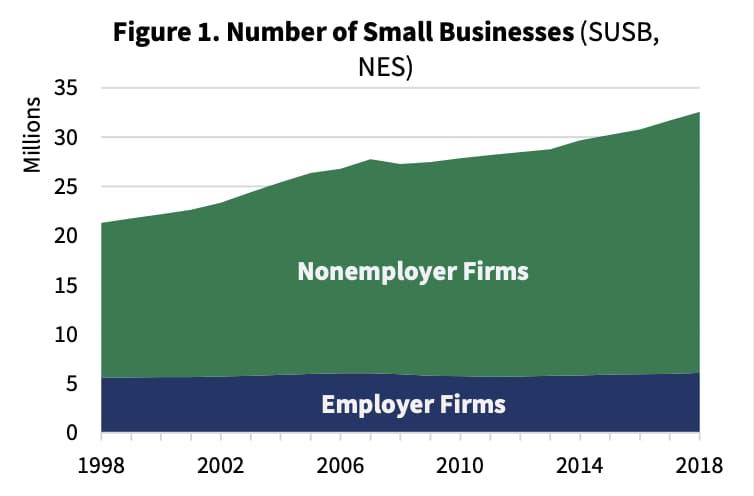Small businesses form the backbone of the American economy, driving innovation, creating jobs, and fostering community growth across the nation. A recent report from the Pew Research Center offers an in-depth analysis of the landscape of small businesses in the United States, shedding light on their demographics, challenges, and evolving role in a rapidly changing market. This article explores key findings from the study, providing a comprehensive overview of how small enterprises continue to shape the economic and social fabric of the country.
Small Business Landscape in the United States Insights from Pew Research Center Analysis
Small enterprises form the backbone of the U.S. economy, representing a diverse array of industries and ownership structures. According to recent findings by Pew Research Center, these businesses account for nearly 47% of private-sector employment, highlighting their critical role in job creation across urban and rural areas alike. The study underscores a notable shift in ownership demographics, with a rise in minority-owned and women-led businesses, signaling a transforming entrepreneurial ecosystem that reflects broader societal changes.
Pew’s analysis also sheds light on the challenges confronting small business owners, from navigating evolving consumer behaviors to managing supply chain disruptions. Key insights include:
- Access to Capital: Nearly 30% of small businesses report difficulty securing financing.
- Technology Adoption: Over 60% of firms have accelerated digital tools integration post-pandemic.
- Workforce Recruitment: Labor shortages remain a top concern for 45% of respondents.
| Business Sector | % of Total Small Businesses | Average Growth Rate (2021-2023) |
|---|---|---|
| Professional Services | 28% | 5.3% |
| Retail Trade | 18% | 3.7% |
| Healthcare | 15% | 6.1% |
| Construction | 12% | 4.0% |
| Hospitality | 10% | 2.5% |
Challenges Facing Small Business Owners in Today’s Economy
Small business owners face a complex landscape marked by fluctuating consumer demand and unpredictable market conditions. Inflationary pressures continue to raise the costs of raw materials, labor, and shipping, squeezing profit margins and forcing many to reconsider pricing strategies. Additionally, navigating regulatory compliance and keeping pace with rapidly evolving technology present ongoing hurdles for entrepreneurs with limited resources. The ability to adapt quickly can be the difference between growth and closure in this volatile environment.
Key challenges impacting small enterprises today include:
- Access to affordable credit and capital
- Labor shortages and rising wages
- Supply chain disruptions and delays
- Increased competition from large corporations and online platforms
| Challenge | Impact | Response Strategy |
|---|---|---|
| Rising Inflation | Reduced margins | Pricing adjustments, cost-cutting |
| Labor Shortages | Operational delays | Increased wages, automation |
| Supply Chain Issues | Inventory shortages | Supplier diversification |
| Technological Demands | Increased expenses | Invest in digital tools |
Key Factors Driving Small Business Success and Growth
Small businesses across the U.S. thrive due to a combination of agility, community engagement, and innovation. Entrepreneurs who prioritize customer-centric approaches foster loyalty and adapt swiftly to market trends. Key elements such as access to technology, a skilled workforce, and strong local networks empower these ventures to maintain competitive edges, even in fluctuating economic climates.
Moreover, funding diversity and strategic planning stand out as vital components influencing growth trajectories. From microloans to crowdfunding, various financing options enable small businesses to scale operations efficiently. Below is an overview of crucial success factors:
- Innovation and Adaptability: Staying ahead with new products and flexible business models.
- Customer Relationships: Building trust through personalized service and engagement.
- Community Integration: Leveraging local support and partnerships.
- Financial Management: Effective budgeting and access to diverse capital sources.
- Technology Utilization: Employing digital tools for marketing, sales, and operations.
| Factor | Impact on Growth |
|---|---|
| Customer Loyalty | Increases repeat sales by 40% |
| Access to Capital | Enables 3x faster scaling |
| Local Partnerships | Boosts brand visibility by 25% |
| Digital Presence | Drives 50% more online inquiries |
Strategic Recommendations to Support and Sustain Small Enterprises
Small enterprises are the backbone of the U.S. economy, yet they often face unique challenges that hinder long-term growth and sustainability. To empower these businesses, targeted support must focus on enhancing access to capital, improving digital infrastructure, and expanding workforce training programs. Policymakers and community leaders should prioritize:
- Creating low-interest loan programs tailored to small business needs
- Facilitating partnerships with technology providers to upgrade digital tools
- Providing ongoing educational initiatives in financial literacy and e-commerce
Moreover, fostering an ecosystem where small businesses can thrive requires data-driven strategies that address regional disparities and industry-specific trends. Collaboration between local governments, private sector, and nonprofits is crucial. The following table highlights key focus areas and corresponding actions that can sustain small business growth effectively:
| Focus Area | Recommended Action | Expected Outcome |
|---|---|---|
| Access to Funding | Expand microloan availability | Increase startup success rates |
| Digital Transformation | Offer tech upgrade grants | Boost online sales capabilities |
| Workforce Development | Initiate skills workshops | Reduce labor market mismatch |
| Community Engagement | Launch local business networks | Enhance peer support systems |
Key Takeaways
In summary, the Pew Research Center’s examination of small businesses in the U.S. highlights their vital role in the nation’s economy, while also shedding light on the challenges these enterprises face in today’s evolving market landscape. As policymakers and stakeholders seek to support growth and resilience, understanding these detailed insights will be crucial for fostering a more sustainable and inclusive small business environment moving forward.




